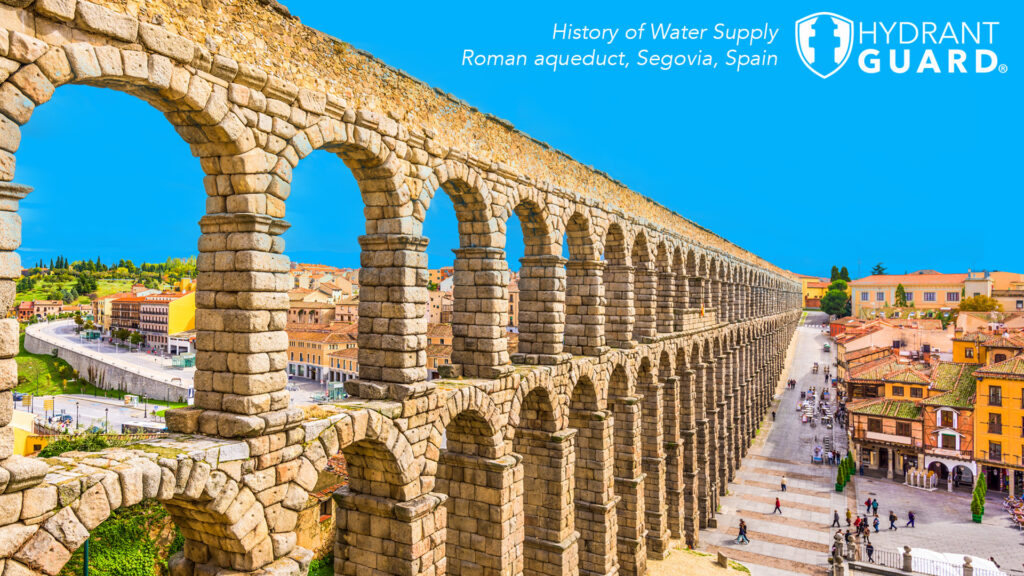Rome: The City that Set the Thousand-Year Water Supply Standard
This post is part of our History of Water Supply series

The site of Rome is said to have been chosen because it was the most favorable spot in the river Tiber. But the exploding population strained the river beyond its limits, prompting the Romans to constantly dig for new ideas to keep the city’s need for water satisfied.
By the time Sextus Frontinus wrote up his famous report on the state of Rome’s aquatic infrastructure (De Aquaeductu) around 100 AD, the city had already been prospering for hundreds of years. This was a city with lead metal and backup pipes (to facilitate repairs); towering aqueducts hundreds of kilometers long, conveying 40+ million gallons of water a day; inverted siphons, which used gravitational energy to whip water across valleys; and baths and fountains that both beautified the urban landscape and made water available to the entire city. Water was truly at the heart of Roman public and private life.
But despite appearances, Frontinus was worried about Rome’s water supply. He was especially eager to prosecute corrupt farmers and traders who illegally used pipes to tap and divert water from the city’s channels. Next, using maps he himself had drawn up, he concluded many waterways were working under capacity and required maintenance. Rome had 9 aqueducts at the time, and he took the time to measure the discharge rate of each. Because each originated from a different source, the water quality of each waterway was different, and each was earmarked for a particular purpose. In his report, Frontinus was worried about the negligent and dangerous practice of mixing supplies from different sources. Infrastructure upkeep, illegal diversions, overpumping, monitoring water quality, data keeping; these are all issues that keep governments and water districts busy today.
With Rome, we open a window onto the sheer diversity of roles that water plays in city life. Ancient Romans loved enjoying a day at the baths, but were also plagued by waterborne diseases that festered in public facilities. Over a millennium later, Europe was drawing on the knowledge behind Rome’s engineering feats to build the great cities of the Middle Ages. Equally importantly, the scientific developments of the 16th and 17th century finally started giving us insight into what’s in our water.
Pictured below: A few remarkable examples of engineering feats that have stood the test of time.





